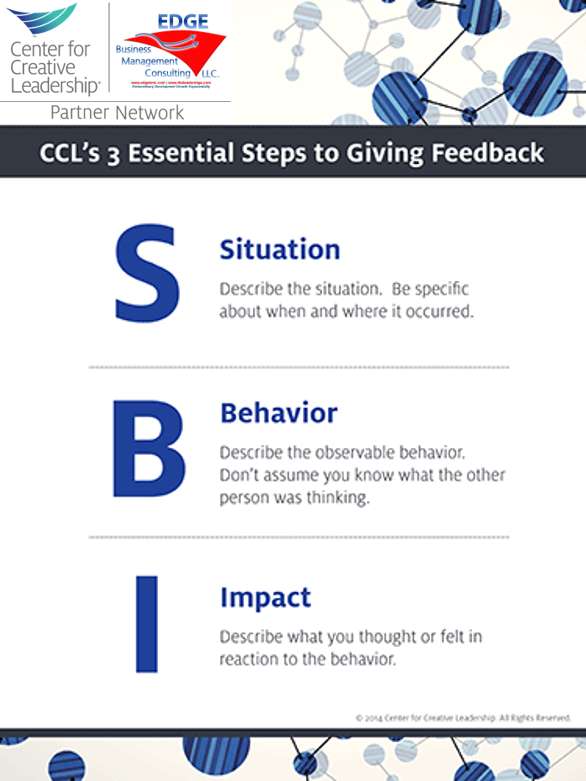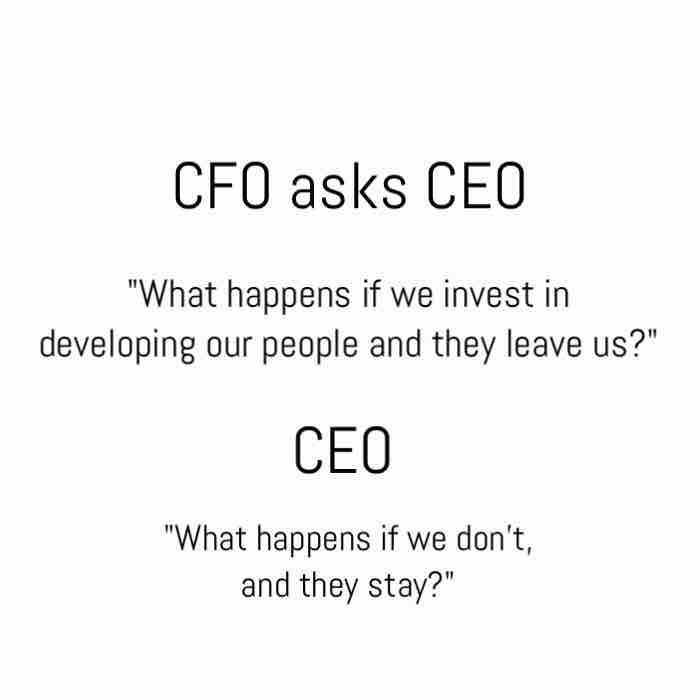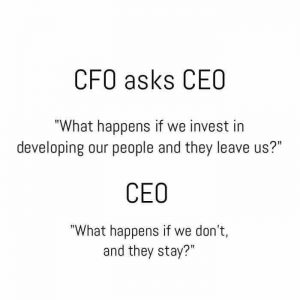My Love of Feedback
I published a piece on my love of feedback several months ago and I am back to introduce another method of delivering feedback that works exponentially well.
With all the talk about eliminating performance management processes, it’s imperative to have something else, a process, to provide feedback in place. This is so employees know how they are doing, to repeat productive behaviors or eliminate counter-productive behavior.
Imagine for a Moment
Imagine for a moment that you recently gave some feedback to a team member. You told her that her meeting agendas looked great, but she needed to significantly improve her presentation and meeting management skills.
It’s time to follow up a few weeks later to find out why she hasn’t made the changes needed to be more effective in the areas mentioned. In your follow-up, you discover that she didn’t understand what she could do to improve and that your feedback generated more questions than the benevolent help to intended. She was left thinking “What’s good about my agendas that I can leverage again?” and “What’s wrong with my presentation skills?” and “How did I mismanage the meeting?”
Developed by The Center for Creative Leadership, the Situation – Behavior – Impact (SBI) Feedback tool outlines a simple structure that you can use to deliver more effective feedback. It focuses your comments on specific situations and behaviors, and then outlines the impact that these behaviors have on others.
[Effective] Feedback is a focused dialogue between a manager and an employee, a method of sharing information and perspectives about performance. The goal of ongoing feedback is to identify where performance is effective and where performance needs improvement.
Effective feedback helps the receiver understand exactly what he or she did and what impact it had on you and others. When the information is specific, yet without interpretation, judgement, or evaluation, there is a better chance that the person hearing the feedback will be motivated to begin, continue, or stop behaviors that affect performance.
Situation – Behavior – Impact
The Situation – Behavior – Impact technique of giving feedback is simple and contains three elements:
SITUATION: Anchors feedback in time, place, and circumstances and helps receiver remember and/or understand the context.
BEHAVIOR: Observable actions that can be recorded (audio or video) and allows feedback receiver to know exactly what he or she did that had impact.
IMPACT: Feelings and thoughts the feedback giver had, and how the feedback giver or others behaved as a result of the feedback receiver’s behavior.
In an organizational and work context, the impact of the behavior can include work outcomes, client satisfaction, work team, and/or the larger organization and business. It can also include the impact on the individual who demonstrated the behavior; in essence, the consequences or result of their behavior on their reputation, perceived professionalism, capability, etc.
Most often, a description of the impact will start with, “I felt …” or, “I was” or, “It appeared to me others were … “. If you find yourself saying, “you were … “, you’re probably on the wrong track. An impact statement is not an interpretation of why the individual showed that behavior, and it is especially important not to label the behavior in a psychological way or to make a judgment about the person.
SO, before you jump on the bandwagon and eliminate your performance management process, contact us to help you and your employees give each other more effective feedback. Getting this process in place first will help you make sure you make the right decision in the long term.
Who Are We
EDGE Business Management Consulting, a Network Partner with the Center for Creative Leadership, is a Human Capital Consulting firm, focusing on three primary areas to help you achieve exponential growth. We can serve you in many ways, however our focus is in the areas of Talent Management, Organizational Development, and Leadership Development.
For immediate inquiries, contact Dan Freschi at (414) 301-3343 or email dan@edgebmc.com, and visit our website at www.edgebmc.com.




